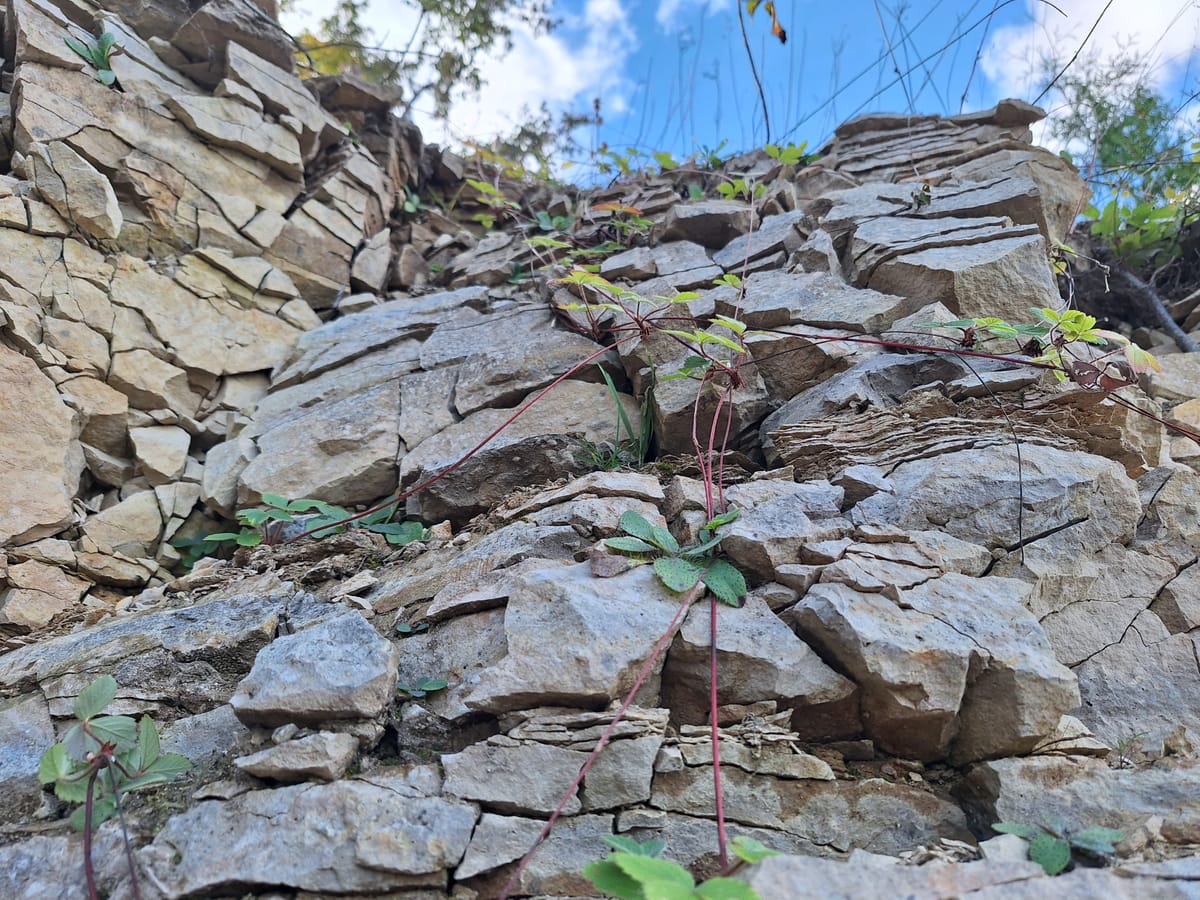Blog beginnings

I look out over my back yard and I see many things. I see the tunnel the woodchuck has burrowed under the fence. I see the twirling maple samaras transformed into seedling trees. I see plenty of work I could be doing. I see my home, the place where I have bonfires with friends, the place where a bird dropped a perfect circle of moss on my head, my community. In my memory I see the lawns where my mom took pictures of me in my first Easter dress, my prom dress, my wedding dress. I see out over the vista of history - my ancestors in farmyards and 4-H gardens, or farther back in clear-cuts of oak and hickory. I’ve grown obsessed with this green postage stamp, this personal outdoors, this grassy tapestry.
I have always loved plants and growing things. I was born in northern Michigan and explored the woods, dunes, and lakes with the deer, trout, and eagles. I remember when zebra mussels invaded the Great Lakes because us kids had to start wearing water shoes or be cut bloody on their shells. I ate wild raspberries in the backyard of my kindergarten and found morels in the woods behind my elementary school.
When my family moved across some ambiguous border that separated the North from the Midwest, I was surprised at the change in the landscape. Instead of hearing woodpeckers and splashing waves, the ambient sound of the suburbs was lawnmowers and mourning doves. I began to see that what the lawnmowers were accomplishing was the destruction of the forest that I had known. Every year, maple seedlings sprouted and were decapitated. One spring we had a large patch of bare soil in the back yard under new deck foundations – it was completely covered with hundreds of maple seedlings. Thinking about their inevitable death by darkness felt unbearably sad for a morbid teenager. I picked them out and piled them on a muddy baking sheet to transplant around the yard. I think a few still stand.
As a lonely kid, college was an overwhelming deluge of people. I tried to throw myself into the organic farming program with the suntanned hippies and work myself to the bone with a stirrup hoe and Japanese harvesting knife. I was so, so tired. Days bent double with pain became first an asthma, then an ulcerative colitis diagnosis. I thought about my grandfather, a dairy farmer whose work was life-consuming and disabling. My dad, who grew up on that farm, let me fantasize about hand tools and then graciously supported me as I learned, as every young adult must, how stupid I sounded.
I took an internship at a local farm, down hours of lonely corn-lined road. The farmer and I spent months in a historic heatwave hand-hoeing pathways until I was crying from exhaustion in the walk-in cooler. The farmer was hospitalized with heatstroke for a week. Dozens of farm share subscribers complained that we had provided them with so many vegetables that most rotted before they could be eaten. To top it off, I wasn’t even allowed to use the bathroom in the big house.
After graduation I worked for several years as a copy writer for a company that printed plant tags for nurseries. I was creating plastic waste to advertise exotic, often invasive species. I created tags for purple loosetrife, butterfly bush, and Callery pear. My next gig was selling designs for a landscape company. Walking a tightrope between the boys club at the office and the upper-class ladies of my clientele, during a painful divorce, turned out to be impossible for someone like me.
When I tell people I’m a horticulturist, they often start apologizing for all the plants they’ve killed. I usually assure them that I’ve killed more. Starting over in my thirties feels like that. I watered the seeds of my adulthood in some perplexingly wrong way, only to be left with a rotten stem and withered leaves. I’m trying to find hope in the compost.